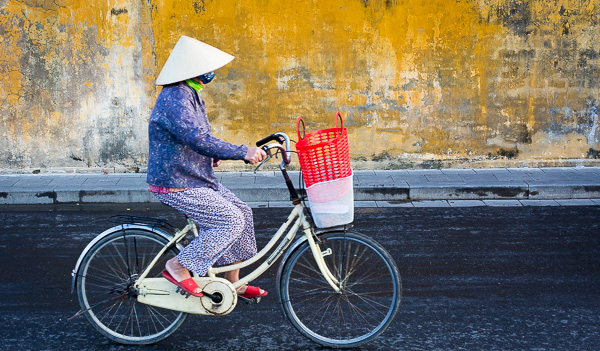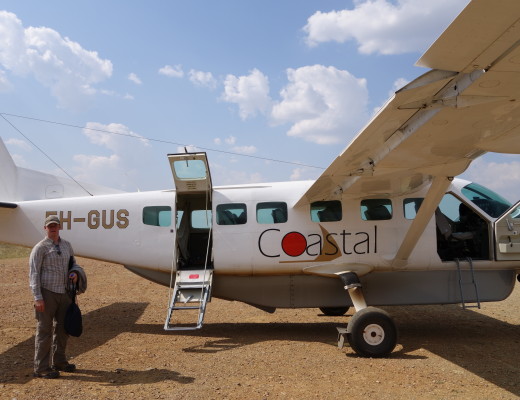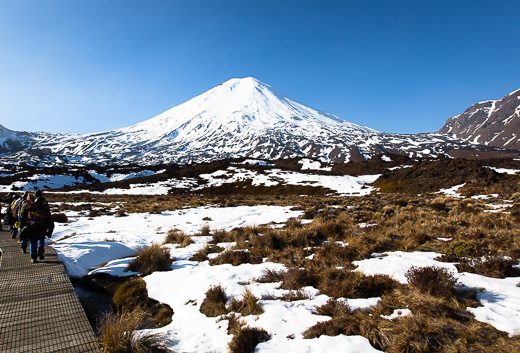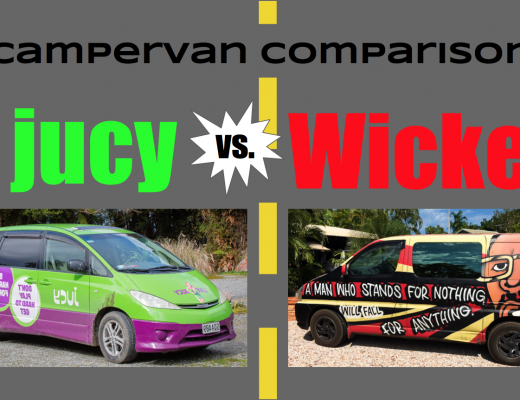I spent a majority of my teenage summers at my family’s cabin in Northern Minnesota. On our drive, a transformation would start just north of Brainerd, Minnesota. We would roll our windows down to smell the pine trees and the lakes as we wound our way up Highway 371. By the time we pulled into Hackensack, the CD with our “cabin song” (Keith Urban’s “Where the Black Top Ends”) would be queued up and we would be singing along with excitement. We were finally there. It was our happy place.
Opening up the door to the cabin we’d be hit with the smells of the rough-cut pine that covers the walls and ceiling of our beloved cabin. The smell of ash from the fireplace lingering in the air accompanied with the crisp Northern Minnesota air which smells like a mix of pine and lake water let us know we were home.
We would always arrive late, it was nearly seven-hours of driving from our home in Southeastern Minnesota, but no matter the time, we would head down to the water to admire it in the moonlight. Then, we would succumb to exhaustion, quickly make up the beds, and crash.
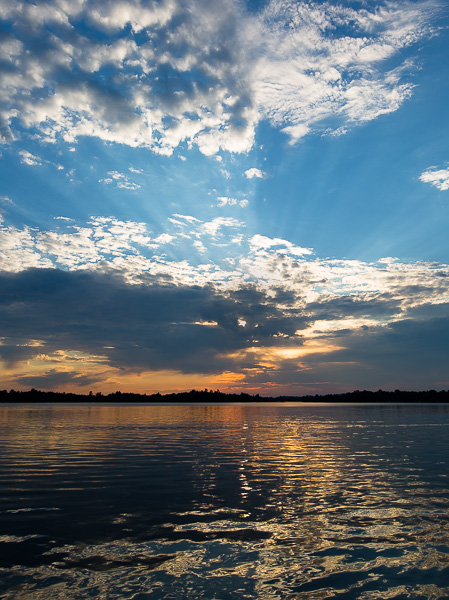
I am feeling relaxed just looking at this sunset we captured at the cabin in Hackensack, Minnesota.
The next morning we would wake up feeling more rested and refreshed than we had in months. There was just something about the cabin that relaxed us. It made us sleep better, smile more, and filled our souls.
Sixteen years later, the cabin remains that place for me. When Ben entered our lives in 2004, the cabin became that place for him as well. Without a doubt, if you ask us for our favorite place in the world, we would say “The Cabin.” But there is a region of the world that we have found through our years of travel, that offers us that same kind of peace. The ability to unclench even when we haven’t noticed that we were feeling stressed. And to relax at a level that is similar to the cabin: Southeast Asia.
Many might scoff at the idea. After all, Southeast Asia sometimes gets a bad rap as a backpacker’s hot spot. But after spending seven months in eight (so far) of the 11 countries considered Southeast Asia, there are so many reasons that we love it and why we think you might too.
Markets
Shopping for dinner is always a colorful and congested time in this part of the world. Fresh ingredients line the streets and cover the ground as you barter for goods and bump shoulders with other shoppers. It is common to find fresh meat and/or fish, produce, and dry goods, but get there early since most people shop for the freshest ingredients shortly after the sun is up.
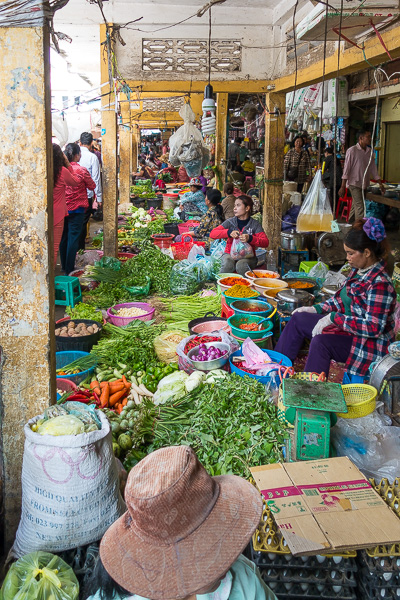
This market in Battambang, Cambodia showcases the colorful and fresh produce available at markets throughout Southeast Asia.
Food
Oh my goodness, the food. This part of the world is known for street food and that is typically our go-to for meals. The flavors vary from country to country, but you can typically find rice or noodles, vegetables, and spice in nearly every dish. As for dessert, don’t expect chocolate, but the fruits here are sweet enough to satisfy any sweet tooth, believe me!
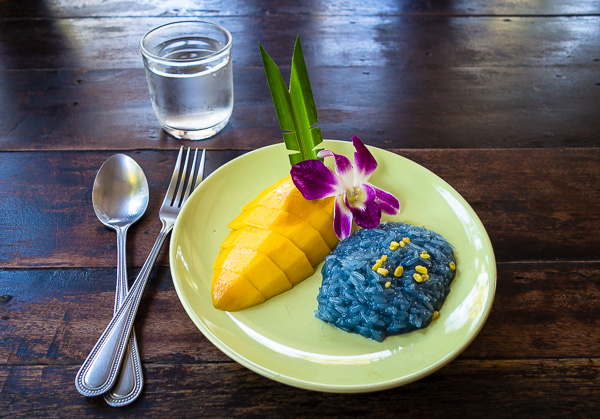
Here is a dessert we made, called Mango Sticky Rice, at a cooking class we took outside of China Mai in Northern Thailand.
Fruit
I love fruit, but until we visited Southeast Asia, I didn’t realize how much flavor tropical fruit could have. The pineapples here are unlike anything we’ve ever tasted before. Just imagine the best possible version of pineapple x 100 and you may be getting close. Same goes for the mangos, oranges (although they are green here), watermelon, and passion fruit.
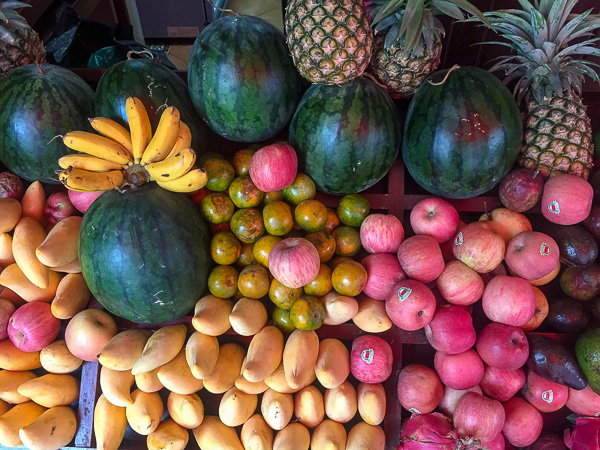
A fruit stand we found in Vientiane, Laos. We may or may not have been drinking a mango juice and pineapple juice while taking the photo.
People
We have found the people across Southeast Asia to be warm, friendly, excited to share, and eager to give a smile. One of our favorite things to do is to walk down the street practicing our small set of words and phrases for the country that we are in. The sight of someones face lighting up when you greet them in their language is something that just doesn’t get old. We have also been fortunate enough to be taken to the homes of some of the people we have met here. Although language is a barrier, we have found miming and gestures work well to communicate. We even were made honorary god parents for a beautiful Cambodian girl who happened to be the infant daughter of our tuk-tuk driver in Kampong Chhnang.
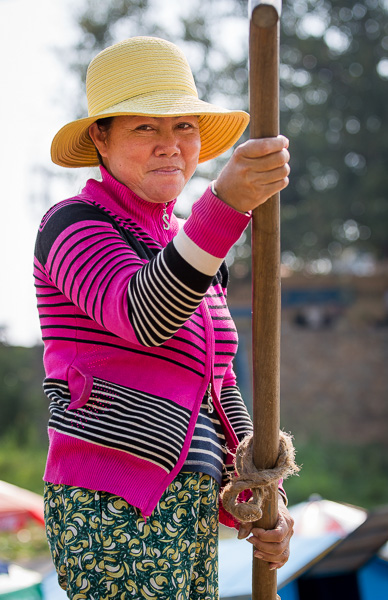
This was the boat driver for our tour of the floating village on Tonle Sap Lake in Cambodia. We not only got to see her village but also got to spend time with her family at her home.
Getting Around
While you can find taxis in most of Southeast Asia, we have an affinity for the tuk tuk. Versions of the vehicle that differ slightly can be found in a majority of the countries in Southeast Asia. It is a cheap and fun way to explore.
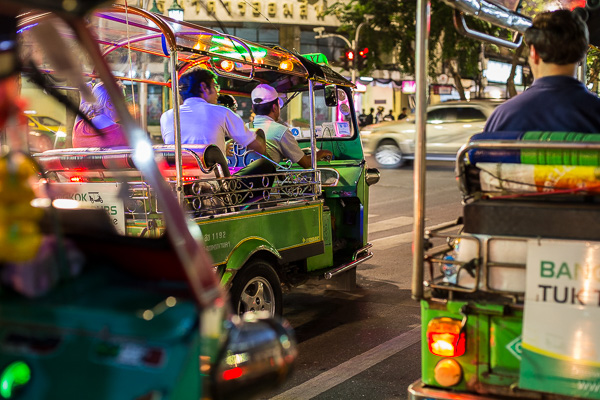
The view from our tuk tuk in Bangkok, Thailand.
Monks
Religion is a big part of life in Southeast Asia, and a majority of the countries practice some form of Buddhism. Along with Buddhism comes monks in colorful robes, different colors for each country. In some places, all boys are required to become monks for at least a short period of time. Women can also practice, but wear white or pink robes, and are called nuns.
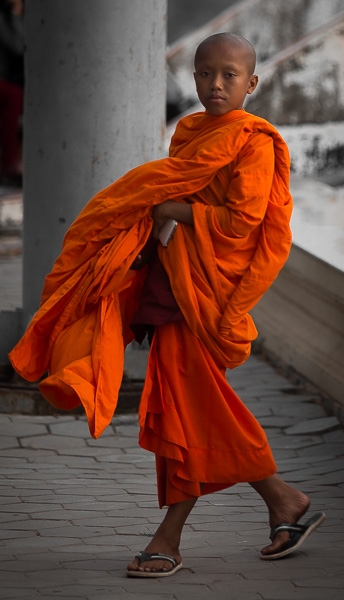
We caught this young monk adjusting his robes along the river in Kampot, Cambodia. He and a dozen other monks were taking a break after evening prayers to take pictures of the sunset.
Places of Worship
There are many different places of worship for Buddhism, including temples, wats, and stupas, which can be found in this part of the world. Beautiful architecturally, they are even more awe inspiring with their added tradition and routine. It is an incredible thing to walk around buildings that are hundreds or thousands of years old while listening to monks chant.
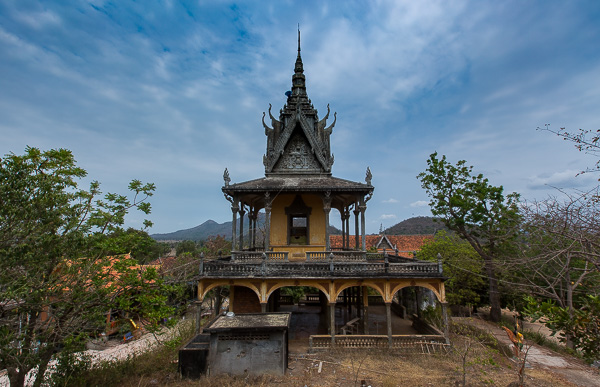
This rundown temple in Kampong Leaeng, Cambodia was being worked on by the monks to restore it to its former glory, although even in ruins it was a special place.
Long Boats
From pictures, it would seem that the colorful longboats found across Southeast Asia seem to glide smoothly through the rivers in a tranquil way. That couldn’t be further from the truth. The loud “putt-putt” of the motors and the traffic jams that often ensue add an amazing soundtrack and some good people watching. A ride in the narrow boats just above the water level is also a thrill, as you cut through the water and weave through the traffic.
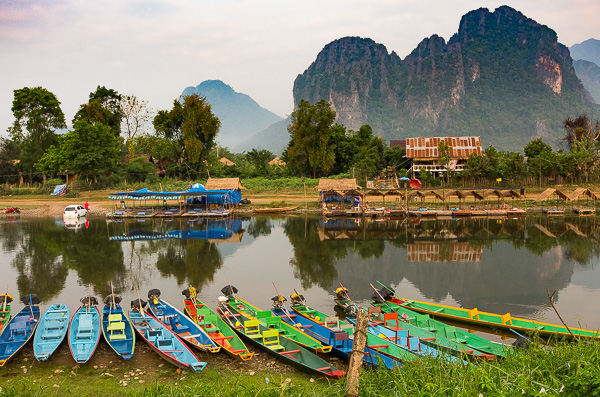
These colorful longboats were parked just outside our bungalow in Vang Vieng, Laos.
Floating Villages
Southeast Asian ingenuity reaches new heights when it comes to floating villages. Fisherman and their families live in floating homes that they have anchored and tied together with other floating homes to create villages on the water. The homes and villages themselves are nothing remarkable if not for the fact that everything and everybody is floating kilometers away from land. Even more fascinating is how life is very normal there. People have dogs for pets, grocery boats float along stopping by houses to make deliveries, and most businesses and community staples like schools and post-offices can be found.
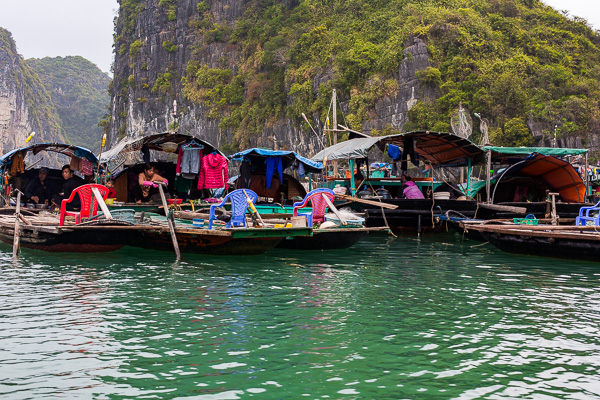
The floating fishing village found in Halong Bay, Vietnam.
Fishing
Growing up in Minnesota, we are no strangers to fishing. But while we use rods and reels to land our catch, net casting is far more common in this part of the world. Similarly, trolling motors are nowhere to be seen.
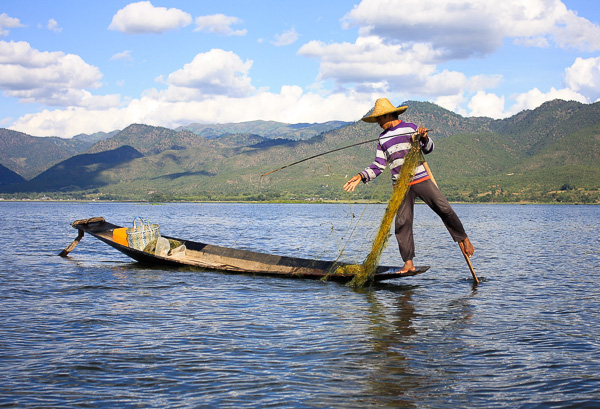
This fisherman on Inle Lake in Myanmar is using the stick in his hand to drop his net. He is using a traditional one leg paddle to move his boat so he can have both his hands on the net.
Festivals
The festivals in Southeast Asia are new and unique to us, but the celebratory feelings and time spent with family are very familiar. We were fortunate enough to be in Luang Prabang, Laos for their biggest holiday, Pi Mai. The Laotian New Year is celebrated in early April with three-days of water fights thought to wash away the sins from the previous year. Similar celebrations take place all over Southeast Asia on the same days with the most well-known festival being Songkran in Thailand.
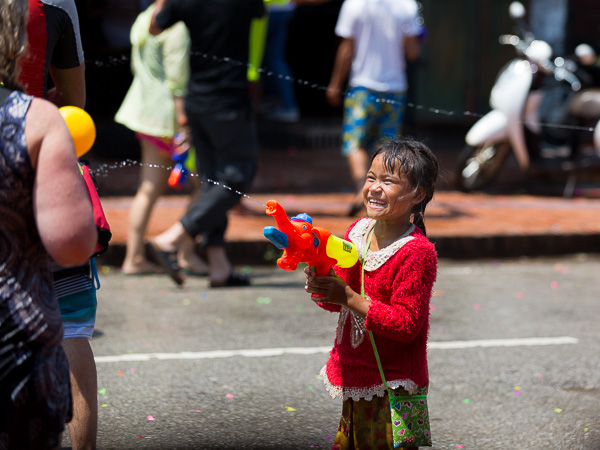
A little girl sprays a tourist on the streets of Luang Prabang, Laos.
Motorbikes
Motorbikes are the most common form of transportation in Southeast Asia. Whether cruising through the rice terraced countryside or racing through cities with populations in the millions, you can’t go far without hearing their distinct sound. Though they might be small, they pack a punch often toting families of five and/or hundreds of pounds of goods. We’ve had fun renting them in Thailand, Cambodia, Laos, Vietnam, and Indonesia, to get around.
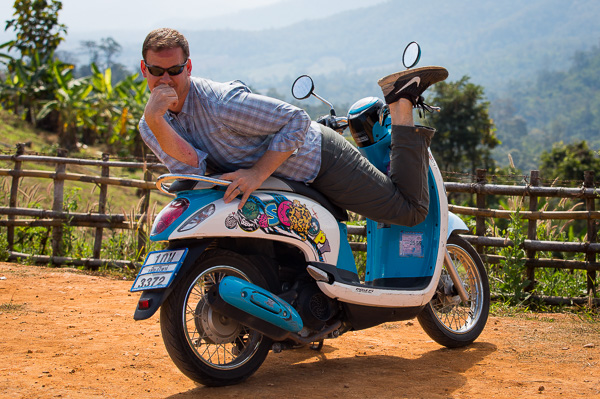
Motorbikes are more common than cars throughout this region and have a certain… je ne sais quoi. Here, Ben is modeling with his bike that we rented in Pai, Thailand to visit the small Chinese village of Santichon.
Colors
Spending time in Southeast Asia is like living in a photograph with the saturation turned way up. There is just something about the colors here that are different than any other place we’ve been. The greens of the jungles and the rice fields and the orange and red from the monks’ robes bring this landscape to life.
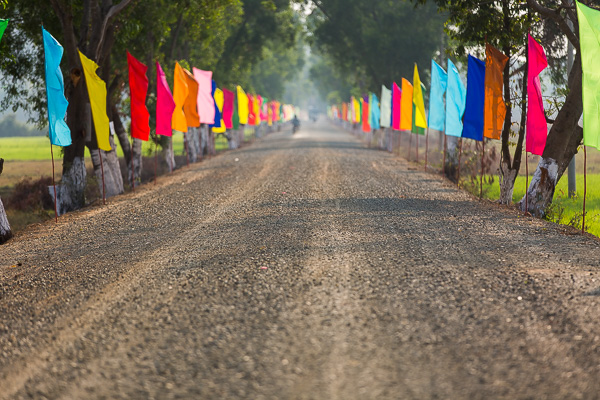
These bright flags were lining the road to a new temple outside Kampong Chhnang, Cambodia.
Colonial Architecture
Although the colonial era in which Britain, France, and the Netherlands ruled across Southeast Asia was largely finished by the mid-20th century, the legacy of that time is still very obvious today. The impact of the European influence can be seen in the food and language of the region, yet the contrast between east and west is highlighted most significantly in the architecture. Whether strolling by the post office in HCMC, Vietnam or taking in the cafe culture of Vientiane, Laos, it’s impossible not to feel as if you’ve stepped back in a much different time.
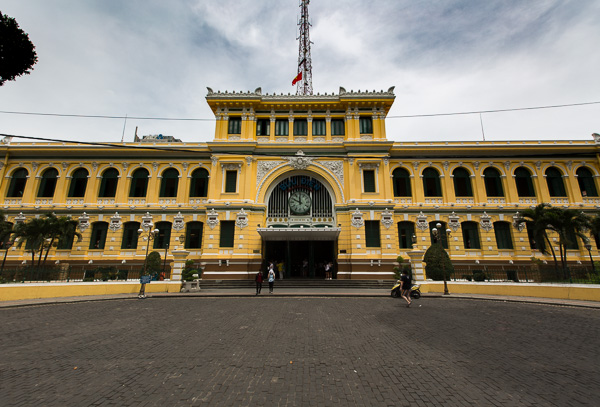
This post office in Ho Chi Minh City, Vietnam is a perfect example of colonial architecture found around Southeast Asia.
History
The history of the region and the individual countries is both fascinating and heartbreaking. The consistent transitions of power and evidence of advanced societies in one generation which are gone the next weave an exciting and illuminating tale. However, in more modern times the region has suffered.
Yet the people across all of these countries appear to have weathered the storm and the smiles on their faces are a true testament to their strength and resilience.
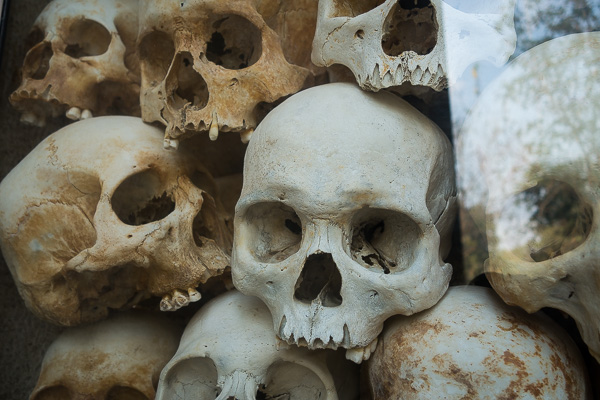
Just a few of the millions of people that Pol Pot and his Khmer Rouge killed during their rule in the 1970s.
Organized Chaos
Millions of motorbikes, cars, buses; street food stalls on the road, no sidewalks, and a loose interpretation of stop lights, make for an exciting time crossing the street in most of Southeast Asia. We’ve learned that slow and steady is the way to go whether you are crossing the street or driving a motorbike, and we wouldn’t have it any other way.
Condiments
Southeast Asian cuisine is incredibly delicious (see “Food” above). What really puts it over the top, however, is the flexibility each diner has to make it their way. Soup, like the one in the photo below, often comes with a variety of herbs and lime, oyster sauce, chili sauce, soy sauce, vinegar, fish sauce, and sugar so that diners can fully customize the taste of their meal to their preference.
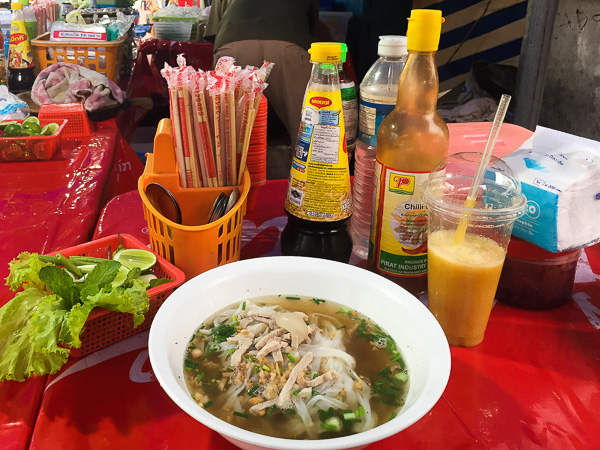
We ate this bowl of soup at a food stall in Luang Prabang, Laos, while sitting on the small plastic chairs that are a staple in this region.
Ethnic Minorities
Whether it is the hill tribes of Northern Vietnam or the head hunters of Borneo, the ethnic minorities across this region have a fascinating history.
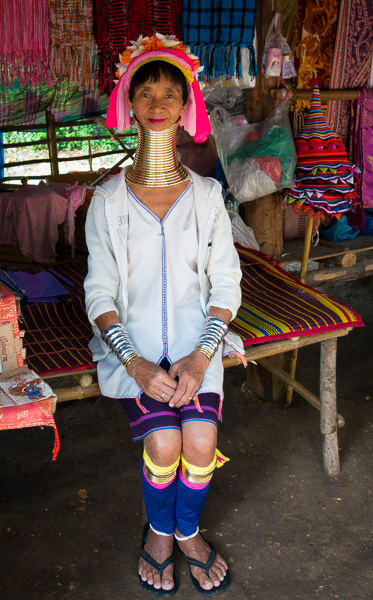
A woman from the Karen (Long-neck) tribe at a community outside of Chiang Mai, Thailand.
Traditional Homes
People throughout Southeast Asia have adapted to their environments amazingly well by adjusting the materials and designs used for building houses. The materials are often whatever is plentiful and close by including bamboo, palm fronds, and sand or mud while the designs take advantage of the landscape to improve cooling or prevent flooding.
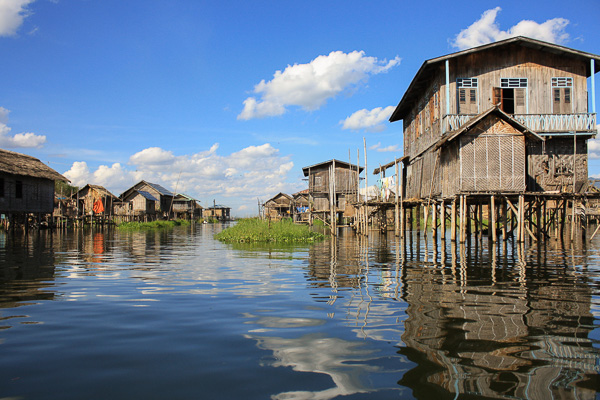
A community of traditional stilt houses in Inle Lake, Myanmar.
Traditional Agriculture
Much of the region has been built upon the backs of farmers who generally have survived on smaller but more fertile plots of land than what’s found in Minnesota. Rice is the most common crop and requires relatively advanced irrigation systems designed into the “fields” themselves. This allows farmers in many areas to have multiple harvests per year even without the use of modern pesticides, fertilizer or machinery.
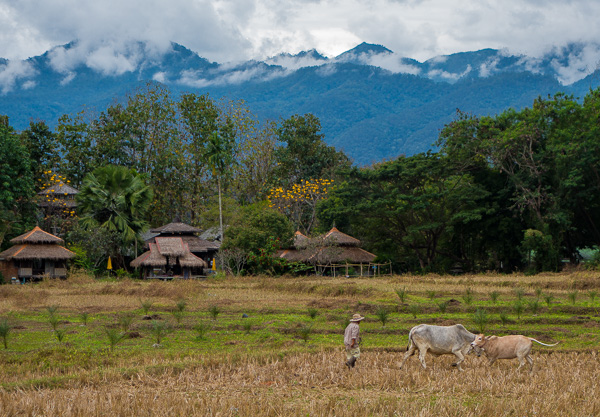
A farmer walks through rice paddies outside of Pai, Thailand.
Script
The Roman Alphabet is the primary alphabet only in Vietnam, while the rest of the region has scripts that are based historically on Sanskrit and have morphed through the years. This makes for beautiful type but is a little more challenging when you are looking for a specific street sign and you have to compare symbols to each other instead of letters you recognize. Same goes for numbers on currency.
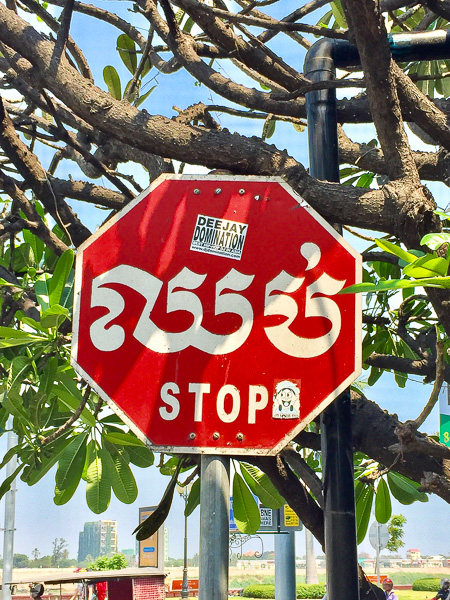
Thank goodness for the red octagonal shape and English translation, otherwise, we definitely wouldn’t be able to understand that script. This stop sign was found in Phnom Penh, Cambodia.
Traditional Dress
While you will see jeans and Chicago Bulls jersey’s no matter where you are in Southeast Asia, you will also commonly find people who are dressed in traditional clothing. The well known Vietnamese nón lá (leaf hat) can be seen across the region, and in Bali, Indonesia, you can’t go far without seeing both men and women dressed in a kind of sarong called a Kamen.
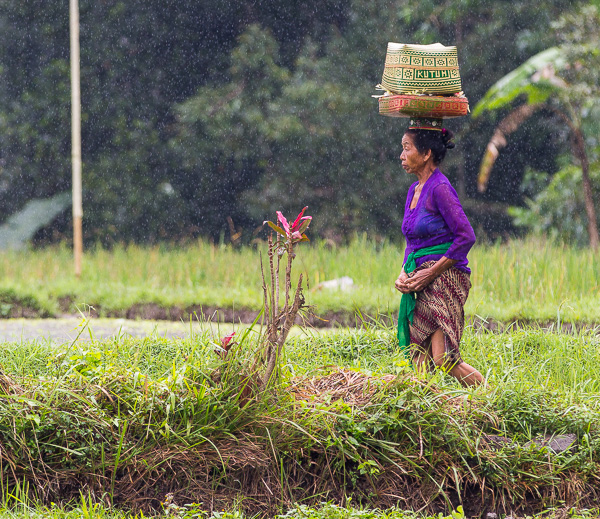
A Balinese woman walking through rice paddies just outside Ubud, Bali, Indonesia, in traditional dress.
